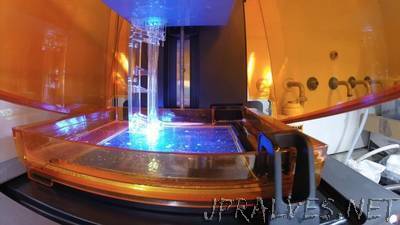
“Many measurement techniques, such as spectroscopy, benefit from the ability to split a single beam of light into two in order to measure changes in one of them. The crucial device that separates the beam is the beam-splitter. These have been mostly limited to light beams, where one uses simply a partially reflective glass. EPFL scientists have now developed a similar device for splitting beams of molecules, where high-voltage electrodes are used to control the motion of the molecules inside a vacuum. The electrodes are built by an innovative method that combines 3D printing and electroplating for the fabrication of complex metallic structures. The same approach can also be used in a wide range of other experiments. The new method is published in Physical Review Applied and overcomes previous fabrication problems thus opening up new avenues. Sean Gordon and Andreas Osterwalder at EPFL’s Institute of Chemical Sciences and Engineering, developed the new fabrication method, and demonstrated it by constructing the complicated combination of electrodes required to guide and split beams of molecules. The production method not only allows complex shapes to be made but, in addition, speeds up production by a factor of 50-100. The technique begins by 3D-printing a plastic piece and then electroplating a 10 μm-thick metal layer onto it. Electroplating is an established technique in various branches of industry like the automobile industry, fabrication of jewelry, or plumbing. It generally uses electrolysis to coat a conductive material with a metallic layer. “but the plating of printed pieces has not been done before in the context of scientific applications,” says Andreas Osterwalder. To make the printed plastic pieces conductive and thus amenable to electroplating, they were first pre-treated by a special procedure developed by the company Galvotec near Zurich. Once the first conductive layer was applied, the pieces could be treated as if they were metallic. The first step can be applied selectively to certain regions of the printed piece, so that the final device contains some areas that are metallic and conductive while others remain insulating.”
